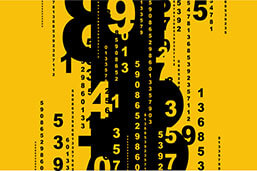
Numbers are an imperative part of academic writing, serving as vital tools to represent quantitative data, statistical data, or measures in an accurate and precise manner. Numbers are used across various fields, including sciences, humanities, and business. However, adherence to specific rules is necessary in terms of using numbers effectively in academia, which vary depending on the style guide followed. This article will provide insights into how numbers are used appropriately.
Definition: Numbers in academic writing
The APA Style is one of the most widely used academic writing styles and is largely adopted by the behavioral and social sciences. A number can be written both numerically or in words within this style.
Typically, a number from one to nine should be written out as words, while numbers from 10 and above should be written out numerically. This general rule also applies to ordinals (first, 10th). Some exceptions do apply, as found next in this article.
Other writing styles utilize different number rules. The Chicago style, for instance, requires numbers to be written out as words up to 100. The MLA style spells out all numbers that can be written within one or two words (three, one hundred, etc.).
Numbers in academic writing: Exceptions
Exceptions to the general rule above apply in the following cases:
1. All numbers should be represented numerically when they are detailing an exact unit of measurement.
2. Write out numerals as words when they begin a sentence, except when dealing with specific years.
3. A number should be written out when dealing with fractions, set expressions, or other known numeric titles.
Numbers in academic writing: Percentages
When dealing with percentages in the APA Style, use numerals followed by the percent sign %, instead of “percent” or the abbreviations, “pct.”, “pct,”, or “pc”.
The same rule when beginning sentences with numerals applies to percentages, i.e., they should be written out as words when they start a sentence.
Numbers in academic writing: Statistical results
Reporting statistics in APA and papers that deal with technical numerical language in qualitative research have their own rules.
Here, all data is written in numerals to remain consistent and easily digested. This applies to the main body, tables, and figures sections of a paper.
Other statistical conventions include:
- Report the majority of statistics to two decimal places.
- Report statistics that can’t exceed 1.0 to three decimal places.
- For values that could exceed 1.0, use a leading zero. Those that can’t exceed 1.0 do not feature a leading zero.
- Italicize statistical values that aren’t Greek letters. E.g. SD.
- Spaces should be left before and after equal, more-than, and less-than signs.
Numbers in academic writing: Measurements
Always use numerals for units of measurement.
Numerals should be used for precise ages, timescales, dates, score lines, points of scale, and monetary sums.
Imprecise ages and generalizations are not numbered but written out.
Numbers in academic writing: Long numbers
Longer numbers have their own set of rules. A period should be used to indicate a decimal point.
Commas are to be used to separate large figures every three digits after 1,000.
For sums exceeding 6 numerals, like 1 million and 1 billion, use a combination of numerals and written language.
FAQs
As a general rule of thumb, numbers up to nine should be written out in the APA Style, while anything exceeding 10 should appear as numerals.
Dates are always written as numerals.
They are written out when they begin a sentence, except for dates and technical data.
The APA Style states that the symbol “%” should be used after numerals, while “percent” should be used for written-out figures.
